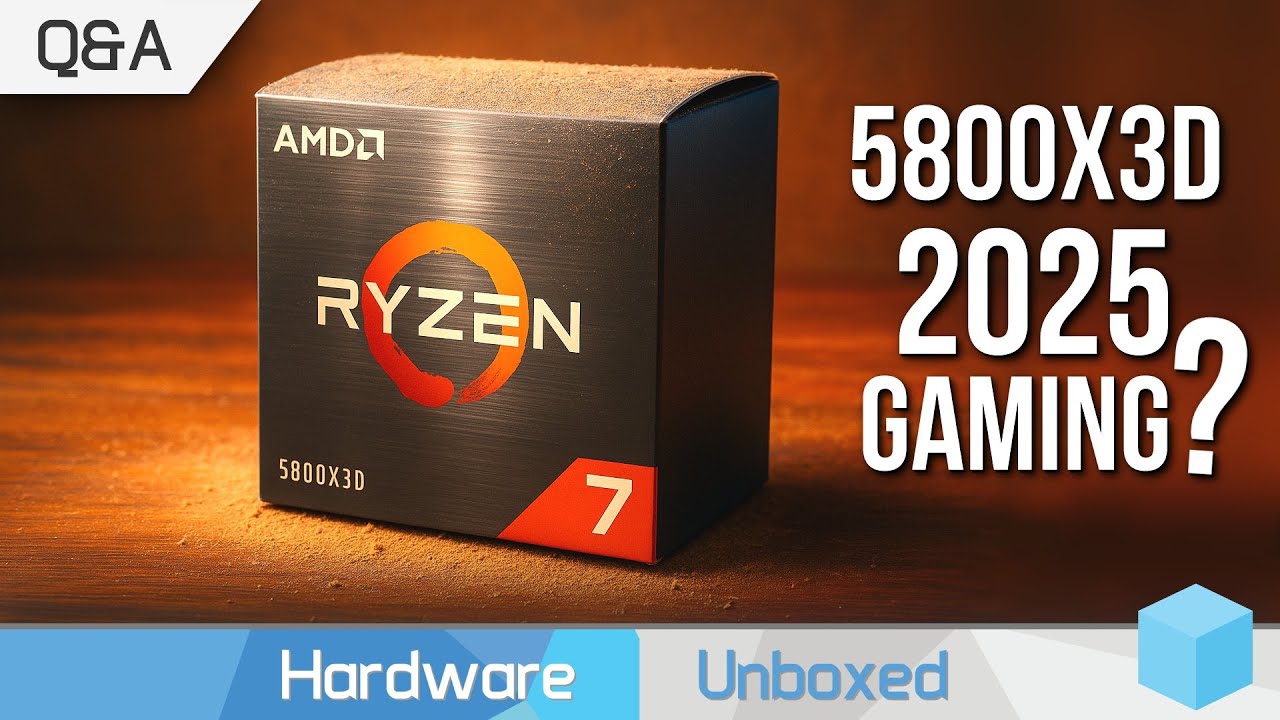In Hardware Unboxed’s June Q&A, Tim and Steve discuss the complexities of modern GPU benchmarking, the justification of $80 game prices based on game quality and replayability, and the evolving landscape of gaming innovation and frame rate preferences. They also affirm that the Ryzen 7 5800X3D remains a viable CPU for current GPUs except in highly CPU-bound scenarios, highlighting the situational nature of bottlenecks and the importance of native resolution testing.
The video is a part of Hardware Unboxed’s June Q&A series, where hosts Tim and Steve discuss various topics related to gaming hardware, benchmarking methodologies, game pricing, and gaming experiences. They begin by addressing a recent benchmarking approach by ComputerBase, which tests newer GPUs with the latest upscaling technologies like DLSS 4 and FSR 4, while older GPUs are tested at native resolution due to image quality concerns with older upscaling methods like FSR 3. They agree that while this approach makes sense for assessing comparable image quality, it complicates benchmarking because it is not an apples-to-apples comparison and is very time-consuming to apply broadly across many games.
The discussion then shifts to the recent trend of $80 pricing for new games, especially on PC and consoles like the Nintendo Switch 2. Tim and Steve debate whether such high prices are justified, emphasizing that the value of a game depends on the quality and replayability it offers. They note that free-to-play games like Fortnite, which receive constant updates and provide long-term engagement, set a high bar for paid games. They argue that if a game delivers years of enjoyment, the higher price can be worthwhile; otherwise, it risks losing sales. They also highlight that PC games often go on sale quickly, which mitigates the impact of high launch prices compared to consoles.
Reflecting on how gaming has changed over the years, both hosts express a sense of reduced excitement due to many modern games feeling derivative and less innovative compared to classics like The Witcher 3 or Star Wars Battlefront 2. They note that while there are still standout titles with unique stories or mechanics, many new releases tend to recycle familiar gameplay styles. Tim mentions his preference for story-driven games, while Steve enjoys multiplayer shooters, and both acknowledge that innovation in genres like RTS has diminished. They also appreciate how some games extend playability with new modes or updates, keeping the gaming experience fresh.
The conversation then turns to the topic of frame rates, specifically whether 30 FPS gaming is “unplayable.” They conclude that while 30 FPS is technically playable, it is generally unenjoyable, especially for fast-paced or competitive games. Both hosts prefer higher frame rates, with Steve emphasizing that he feels uncomfortable even at 60 Hz on his high-refresh-rate monitor. They agree that sacrificing visual quality to achieve higher frame rates is often the better choice, as smoother gameplay enhances the experience more than static image quality improvements that come with lower frame rates.
Finally, they address common questions about CPU-GPU bottlenecks and the usability of older CPUs like the Ryzen 7 5800X3D with new GPUs. They explain that bottleneck assessments are highly situational, depending on the game, settings, and whether the user prioritizes frame rate or image quality. Generally, competitive multiplayer games tend to be CPU-limited, while single-player games with intensive graphics are more GPU-limited. Regarding the Ryzen 7 5800X3D, they note it remains usable and competitive with modern GPUs except in heavily CPU-bound scenarios where newer CPUs like the 7800X3D offer improvements. They conclude by emphasizing the importance of native resolution testing in benchmarks and the evolving nature of gaming hardware and software.
